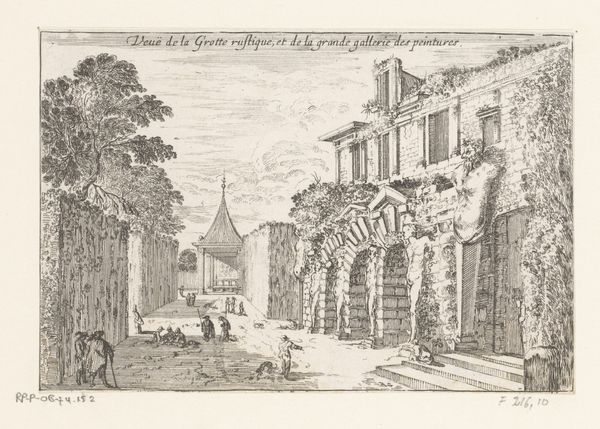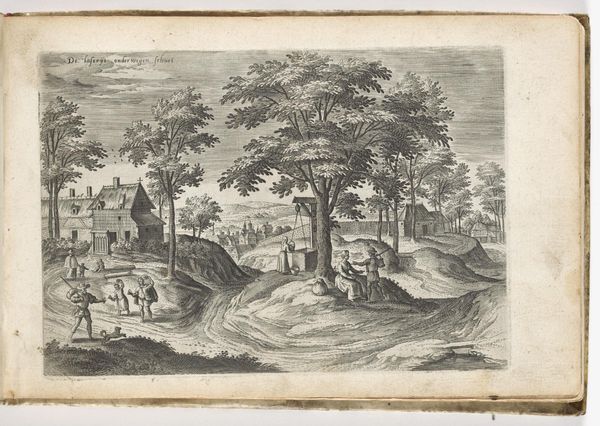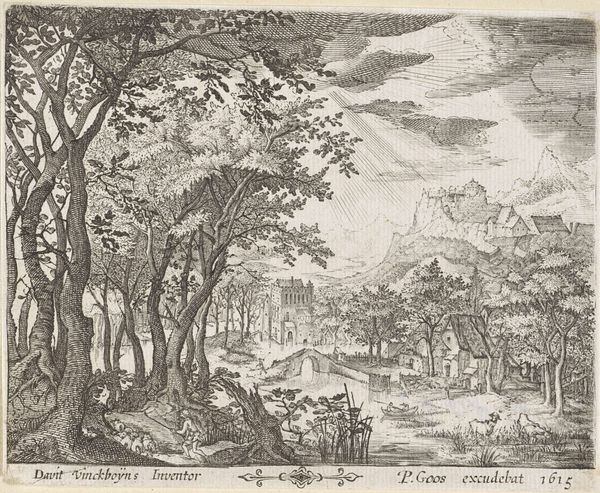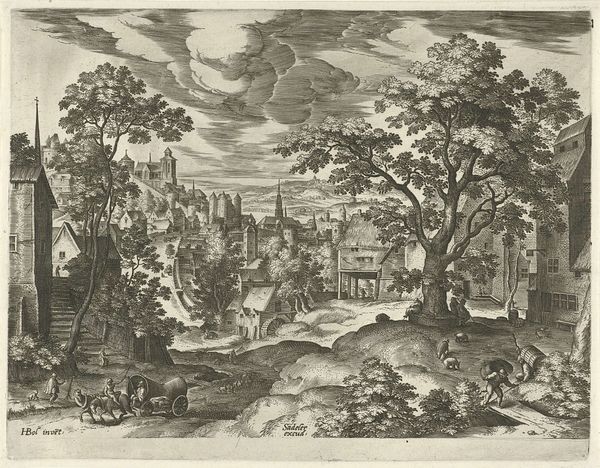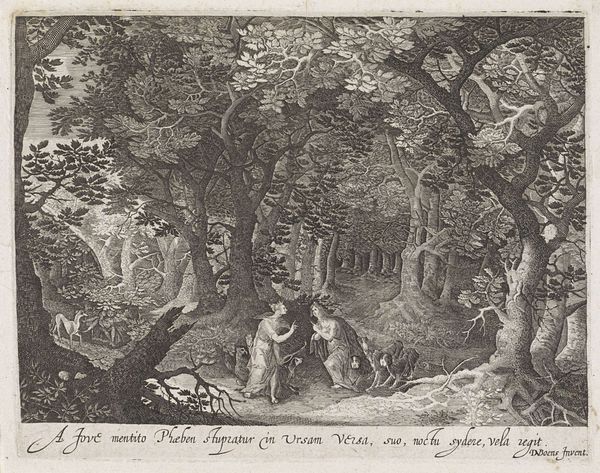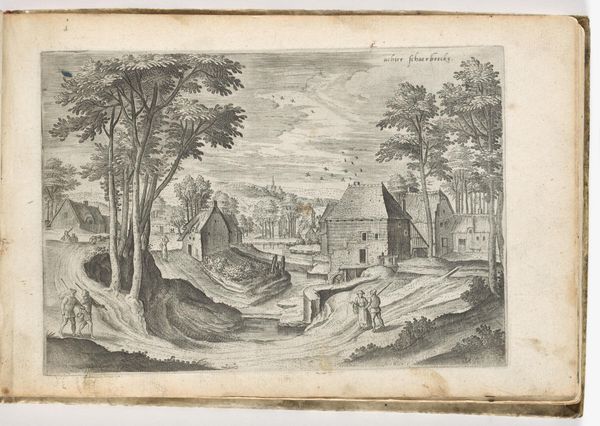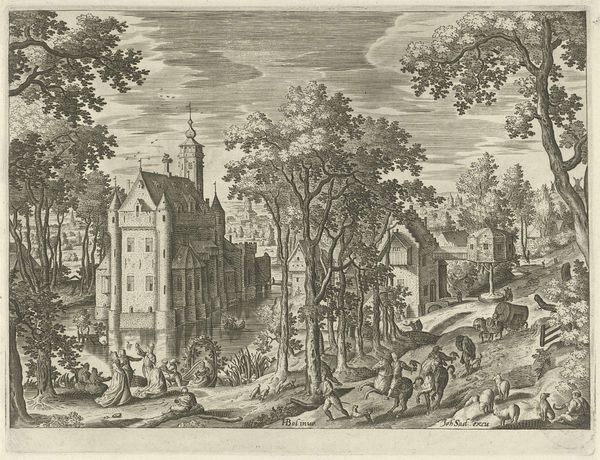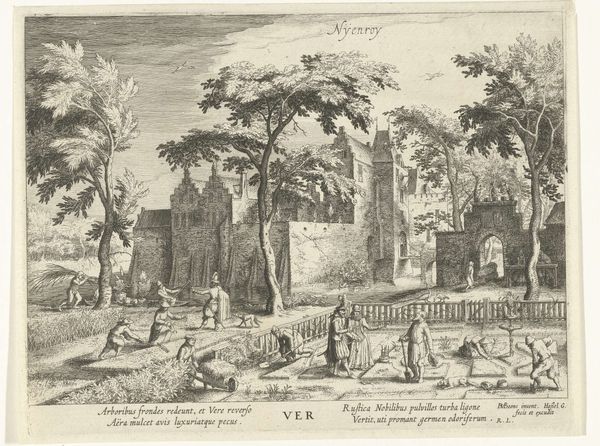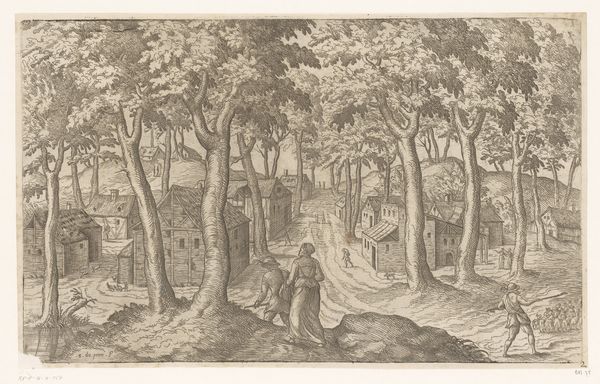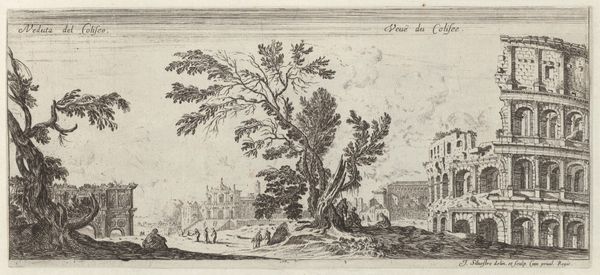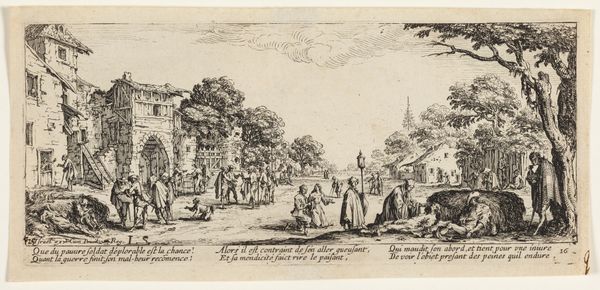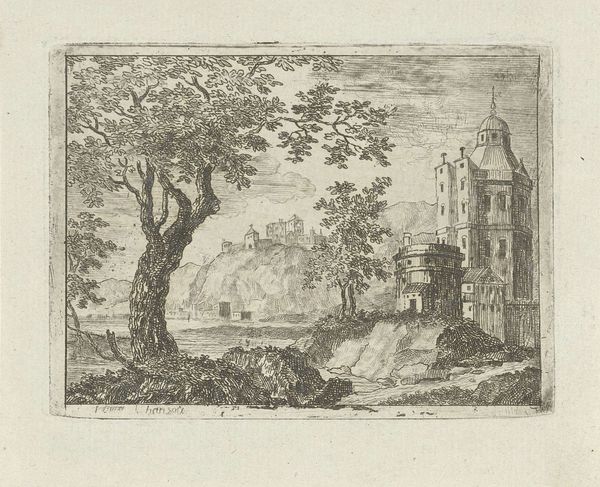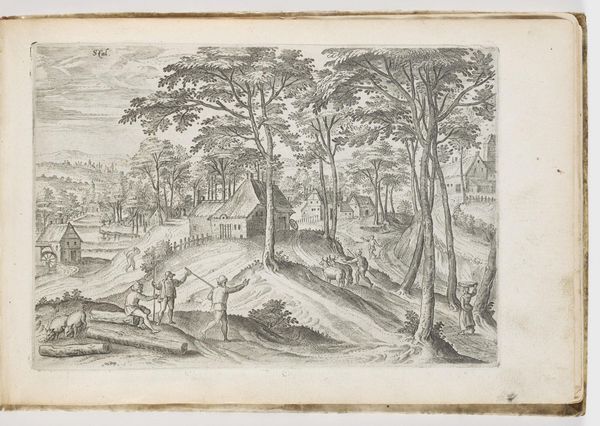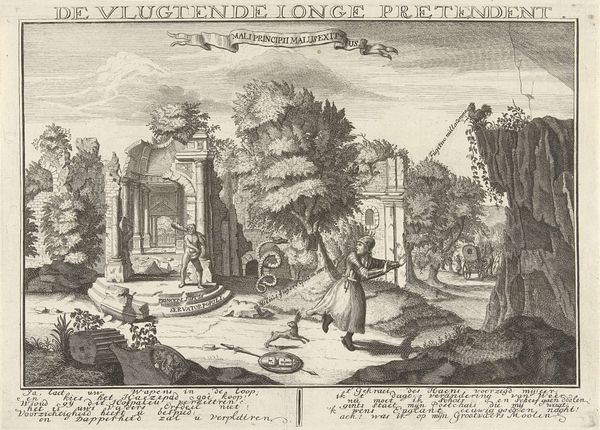
print, etching, engraving
#
baroque
# print
#
pen sketch
#
etching
#
old engraving style
#
landscape
#
genre-painting
#
history-painting
#
engraving
Dimensions: height 161 mm, width 207 mm
Copyright: Rijks Museum: Open Domain
Curator: My immediate impression is one of controlled chaos—a pastoral scene bursting with carefully placed detail, yet somehow managing to feel organic. Editor: We’re looking at "Apollo en Leucothea," an engraving now housed in the Rijksmuseum. Its creation is attributed to an anonymous artist, dating somewhere between 1591 and 1679. A fascinatingly liminal creation. Curator: Liminal, precisely. The architecture on the left almost acts as a stage set. It contains Apollo, apparently in the act of leaving. Is that supposed to contrast with the earthy naturalism dominating the rest of the composition? Editor: Well, what do you see in the overall context? I think there's something here about the representation of power in daily life. There are figures in the distance near humble homes on the right, but is the focus really on mythology or just life? This engraving blends both domains to create a world where gods are neighbors to mortals. Curator: The interplay of light and shadow certainly enhances that sense of drama, doesn’t it? See how the artist uses line density to create volume, particularly in the rendering of the foliage and architecture. It creates depth through textural contrast, drawing our eye deeper into the scene. The engraving has a tonal elegance I find beautiful. Editor: The printing process itself, the very materiality of engraving, speaks to wider social factors influencing its accessibility and reception. These prints had audiences, they conveyed ideas, even political ones perhaps. Also consider the burgeoning interest during that era in landscape, the place of humanity and the scale of nature represented through it all. Curator: The framing is incredible too. The imposing tree trunks create a powerful verticality that encloses the scene, while also letting light filter in. The eye is drawn to explore different levels of narrative depth. It's so much more than just illustration, in other words. It becomes visual argument through form itself. Editor: An apt summary. This piece is compelling because of its intricate layering of different registers. Myth, daily life, the very nature of pictorial communication—a truly rich landscape for historical study.
Comments
No comments
Be the first to comment and join the conversation on the ultimate creative platform.
